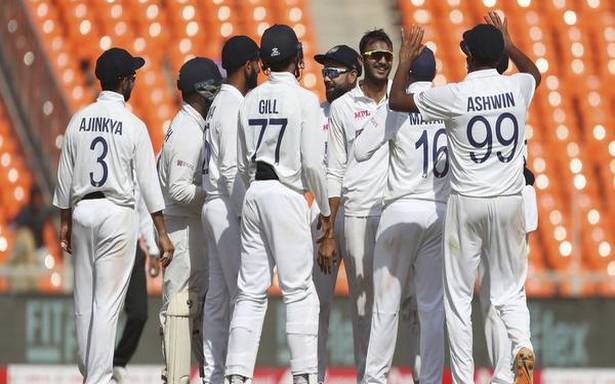Overlapping series in different countries or even the same ones help to get through the calendar more easily
Not for the first time in India, two teams will go on tour for international matches at the same time.
The first eleven will be in England for the Final of the Test World Cup against New Zealand and the Five Tests England Series and the second in Sri Lanka for White Ball Cricket.
Perhaps this is the path international cricket has to take to ensure that one country eats the cake and another gets it. In 1998 India played the Sahara Cup in Canada and the Commonwealth Games in Kuala Lumpur at the same time.
Financially speaking, an India tour is the most sought after in world cricket today, and being in two places at the same time is a nifty way to keep more people happy. But there is more to it than that.
Enough talent
It helps, of course, that India has enough players to put together two full international teams, each capable of winning their respective series.
The triumph in Australia, where India put up a replacement team after injuries (and a birth), had withheld some top players, a clear signal. It has created an opening for bowlers in particular that they might not otherwise have had.
In any case, the Future Tours program needs to be planned differently due to the coronavirus pushing the schedule. Overlapping series in different countries or even the same one will help make it easier to get through the calendar.
It will also mean international teams that are not TV favorites will have more opportunities to meet the popular ones. Everything will be an improvement on the current situation where they are treated like second class citizens.
Few other teams have the luxury of being able to set up two teams at the same time. England, yes. And maybe Australia too.
But since the teams line up different players depending on the ball color, it is possible that test cricket and one-day national players (also T20I) move on different tracks.
And that’s not that bad. It may be possible to play formats simultaneously during the same tour. It would have been worth experimenting with during India’s tour of England later that year, where they play five Tests but no other internationals.
Keep the best for testing
However, top players are usually critical to more than one format. Virat Kohli, Jasprit Bumrah, Ben Stokes, Kane Williamson, Babar Azam, Rashid Khan and others are invaluable members of their teams in all formats. But the idea would be to keep the best for testing while the best of the others play against the white second row ball teams. This will mean a lot to countries that rarely, if ever, play against the best test teams.
Cricket needs to rediscover its evangelical spirit. In 1929-30 England formed two international teams, one from Freddie Calthorpe, who first visited the West Indies, and the other from Harold Gilligan, who traveled to New Zealand. Both hosts had recently joined the testing group and England felt it was necessary to promote the game in these new regions.
The more experienced team went to the West Indies, where the four test series tied 1-1, while the team to New Zealand won 1-0. England played tests in Georgetown and Auckland at the same time. But that’s all a minor matter. What matters is the missionary zeal behind the tours. Spreading the game was important, and the established teams felt responsible to the newbies.
Some of these considerations – so necessary to the game’s spread and so forgotten in the era of television money – should India play against Nepal or Oman, while Australia play Papua New Guinea in ODI.
I’m not sure contemporary teams see this as part of their responsibility. The tension between what the cricket bodies consider their duty and what television sees as their birthright does not exist.
The governing bodies have the dual responsibility of strengthening the sport in different parts of the world and generating funds for themselves.
Television mainly has the latter obligation. The result is that the governing bodies easily align and do not make enough of their bargaining power – the festival tent games.
Simultaneous tours or competitions will free up time for the marquee teams, apart from the somewhat rigid Future Tours program, so that they can deal with the less powerful teams.
The India vs Sri Lanka series is a competition on equal terms and does not fit into this category. But the idea of setting up two teams – even if it’s only about three or four of the front runners – is sensible and can help raise the overall level of the sport.
All that is needed is intent. And sensible planning.

